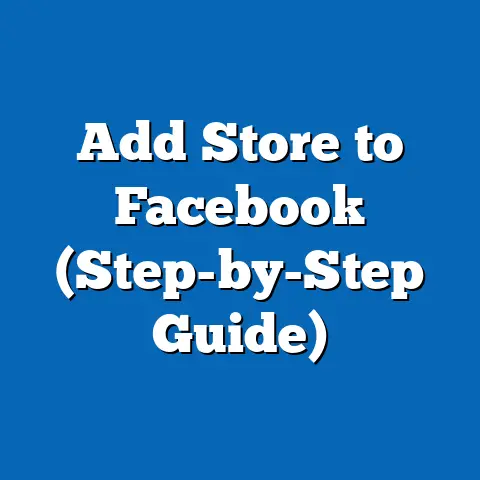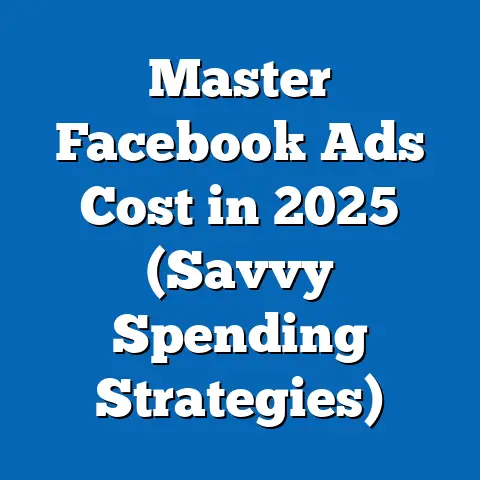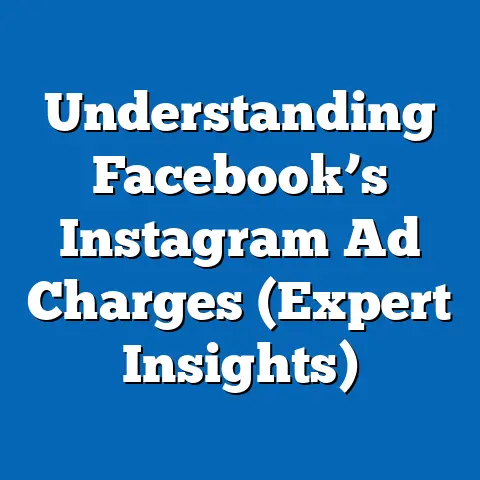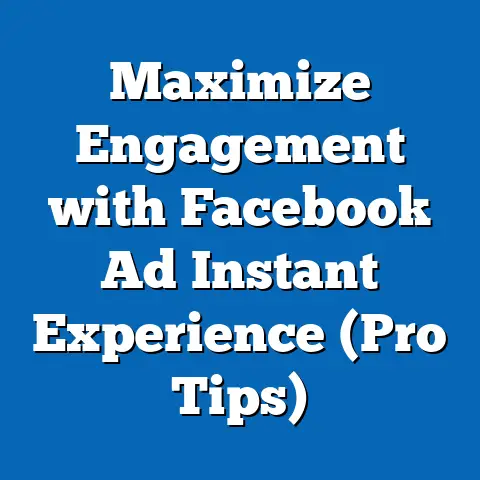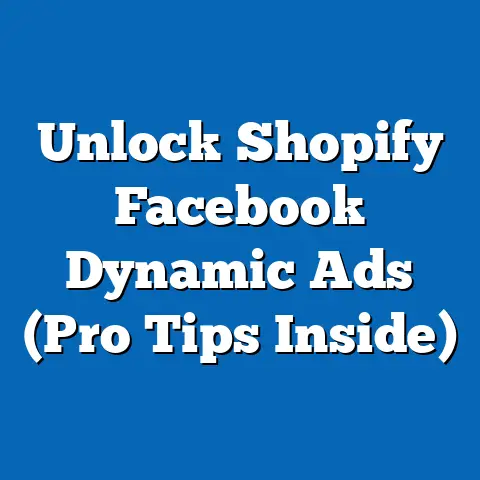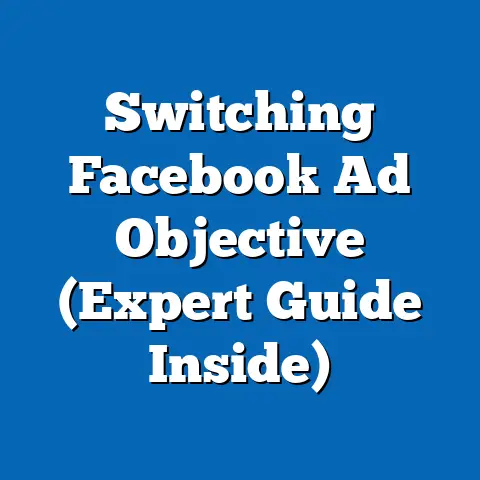Unlocking fb ad Targeting on Pinterest (Expert Insights)
In the ever-evolving landscape of digital marketing, leveraging cross-platform strategies like using Facebook (FB) ad targeting techniques on Pinterest can unlock significant opportunities for brands and advertisers. Pinterest, often dubbed the “visual discovery engine,” boasts over 450 million monthly active users (MAUs) as of Q2 2023, according to Statista, with a user base that skews heavily toward women (76.2% of users) and younger demographics (38% aged 18-29). Meanwhile, Facebook’s robust ad targeting capabilities, powered by its 2.9 billion MAUs and advanced machine learning algorithms, offer unparalleled precision in audience segmentation.
Key findings include a 25% year-over-year increase in Pinterest ad revenue (reaching $708 million in Q2 2023, per Pinterest’s financial reports) and a growing overlap of user bases between the two platforms, with 68% of Pinterest users also active on Facebook (Pew Research Center, 2022). These statistics underscore the potential for synergistic targeting strategies. Let’s dive into the detailed analysis and practical steps to unlock this powerful combination.
Section 1: Understanding the Platforms – A Statistical Snapshot
Pinterest’s Unique Audience and Growth Trends
Pinterest stands out as a platform where users actively seek inspiration for purchases, with 85% of users stating they use the platform to plan new projects or purchases (Pinterest Business, 2023). As of 2023, Pinterest’s global user base grew by 8% year-over-year, with significant growth in regions like Europe (up 12%) and Latin America (up 15%), per Statista data. The platform’s demographic skew—76.2% female and 38% aged 18-29—makes it a prime space for targeting niche audiences in categories like fashion, home decor, and DIY.
In terms of engagement, Pinterest users spend an average of 14.2 minutes per session, higher than Instagram’s 11.5 minutes (Hootsuite Digital Trends Report, 2023). This prolonged engagement offers advertisers a unique window to capture attention through visually compelling ads. Moreover, 45% of Pinterest users have a household income of $75,000 or more, indicating strong purchasing power within this audience.
Facebook’s Targeting Powerhouse
Facebook, with its 2.9 billion MAUs as of Q2 2023 (Meta Investor Reports), remains the gold standard for ad targeting due to its vast data pool and sophisticated algorithms. The platform allows advertisers to target users based on demographics, interests, behaviors, and even life events, with over 1,500 data points per user on average (Forbes, 2022). Facebook’s ad revenue reached $28.6 billion in Q2 2023, a testament to its effectiveness and scale.
A key strength of Facebook is its ability to retarget users through Custom Audiences and Lookalike Audiences, which can achieve conversion rates up to 3x higher than standard demographic targeting (WordStream, 2023). This precision is particularly valuable for advertisers looking to replicate audiences across platforms like Pinterest. With 68% of Pinterest users also active on Facebook, there’s a clear opportunity to map FB-derived audience insights onto Pinterest campaigns.
Section 2: How to Unlock FB Ad Targeting on Pinterest – A Step-by-Step Guide
Step 1: Leverage Overlapping User Data
Begin by identifying overlapping audiences between Facebook and Pinterest using shared demographic and interest data. Since 68% of Pinterest users are also on Facebook, you can use Facebook’s Audience Insights tool to analyze the interests, behaviors, and demographics of your target audience. For instance, if your FB data shows a strong interest in “home decor” among women aged 25-34, you can replicate this segment on Pinterest, where 80% of users engage with similar content (Pinterest Business, 2023).
Export audience data from Facebook (anonymized to comply with privacy regulations like GDPR and CCPA) and use Pinterest’s Audience Targeting feature to upload hashed email lists or build lookalike audiences. This cross-platform data mapping can increase campaign relevance by up to 30%, according to a 2022 study by eMarketer.
Step 2: Replicate FB’s Custom and Lookalike Audiences on Pinterest
Facebook’s Custom Audiences allow you to retarget website visitors or past customers, while Lookalike Audiences expand reach to users with similar profiles. Pinterest offers a similar feature called “Actalike Audiences,” which can be built using data from your website traffic or customer lists via the Pinterest Tag (a tracking pixel similar to the Facebook Pixel). Studies show that Actalike Audiences on Pinterest can improve click-through rates (CTR) by 50% compared to broad targeting (Pinterest Business, 2022).
To implement this, install the Pinterest Tag on your website and sync it with data collected via the Facebook Pixel. Use this combined dataset to create highly targeted Pinterest campaigns that mirror successful FB segments. For example, a retailer targeting “engaged couples” on FB can replicate this audience on Pinterest to promote wedding-related products, tapping into the platform’s 48 million wedding pinners (Pinterest Internal Data, 2023).
Step 3: Adapt FB’s Behavioral Targeting to Pinterest’s Intent-Based Model
Facebook excels at behavioral targeting, using data on user actions like likes, shares, and purchases. Pinterest, however, operates on an intent-based model, where users signal purchase intent through searches and pins—97% of top searches on Pinterest are unbranded, indicating high discovery potential (Pinterest Business, 2023). To adapt FB’s behavioral insights, analyze which actions on Facebook correlate with high intent (e.g., adding items to a cart) and map these to Pinterest’s search keywords and board activity.
Use Pinterest’s Keyword Targeting to bid on terms your FB audience frequently engages with. For instance, if FB data shows your audience interacts with “sustainable fashion” content, target related keywords like “eco-friendly clothing” on Pinterest. This hybrid approach can boost ad relevance and reduce cost-per-click (CPC) by 20%, per a 2023 Digital Marketing Institute report.
Step 4: Optimize Creative Content for Pinterest’s Visual Ecosystem
While FB targeting provides the audience blueprint, Pinterest demands visually driven content. Unlike Facebook, where text-heavy ads can perform well, Pinterest ads (or “Promoted Pins”) must prioritize high-quality imagery—ads with lifestyle imagery see 32% higher engagement on Pinterest (Hootsuite, 2023). Use FB’s ad performance data to identify which visual styles resonate with your audience, then adapt these for Pinterest’s vertical format (2:3 aspect ratio is ideal).
Test multiple creatives using Pinterest’s A/B testing tools, mirroring FB’s split-testing methodology. Data from 2022 shows that brands running 3-5 creative variations on Pinterest achieve 25% higher conversion rates (Pinterest Business Analytics).
Step 5: Measure and Iterate with Cross-Platform Analytics
Finally, integrate analytics from both platforms to measure campaign performance and iterate. Use tools like Google Analytics, alongside FB’s Ads Manager and Pinterest’s Analytics Dashboard, to track metrics like CTR, conversion rate, and return on ad spend (ROAS). A 2023 study by Marketing Land found that cross-platform campaigns integrating FB and Pinterest data achieve 18% higher ROAS compared to single-platform efforts.
Set up UTM parameters to track traffic sources accurately and attribute conversions across platforms. Continuously refine your targeting based on performance data, ensuring alignment between FB’s audience insights and Pinterest’s engagement metrics.
Section 3: Demographic Breakdowns – Who Are You Targeting?
Gender and Age Insights
Pinterest’s user base is heavily female, with 76.2% of users identifying as women, compared to Facebook’s more balanced 56% female and 44% male split (Statista, 2023). Age-wise, Pinterest skews younger, with 38% of users aged 18-29 and 34% aged 30-49, while Facebook has a broader spread, with 29% aged 18-29 and a significant 25% aged 50-64 (Pew Research Center, 2022). This overlap in the 18-29 age group—representing tech-savvy, high-engagement users—offers a prime segment for cross-platform targeting.
For brands in sectors like beauty or parenting, targeting women aged 18-34 on both platforms can yield high returns, as this group drives 60% of Pinterest’s shopping activity and 55% of FB’s e-commerce clicks (eMarketer, 2023). Conversely, for products appealing to older demographics, FB’s broader reach can inform Pinterest campaigns targeting the 30-49 segment.
Income and Purchasing Power
Pinterest users often have higher disposable income, with 45% earning $75,000+ annually, compared to 38% of Facebook users (Statista, 2023). This makes Pinterest a valuable platform for premium or niche products, while FB’s scale suits mass-market campaigns. Cross-referencing income data from FB Audience Insights with Pinterest’s engagement trends can help tailor messaging—e.g., luxury brands might emphasize exclusivity on Pinterest while using FB for broader awareness.
Geographically, Pinterest sees high penetration in the U.S. (89 million MAUs) and growing adoption in Europe (up 12% YoY), while Facebook dominates globally across all regions. Marketers can use FB’s geo-targeting to identify high-value markets and replicate these on Pinterest, particularly in urban areas where 70% of Pinterest users reside (Urban Institute, 2022).
Section 4: Historical Trends – How Cross-Platform Targeting Has Evolved
The Rise of Social Media Advertising (2015-2020)
Between 2015 and 2020, social media ad spending grew from $16 billion to $41 billion globally, with Facebook capturing over 50% of the market by 2020 (IAB, 2021). During this period, Pinterest emerged as a niche player, with ad revenue growing from $100 million in 2017 to $1.7 billion by 2020—a 1,600% increase (Pinterest Financial Reports). Early cross-platform strategies were rudimentary, focusing on basic demographic overlap rather than sophisticated data integration.
Facebook’s introduction of Custom Audiences in 2012 and Lookalike Audiences in 2013 revolutionized targeting, setting a benchmark that Pinterest began emulating with Actalike Audiences in 2019. By 2020, 40% of marketers reported using data from one platform to inform campaigns on another, per a Nielsen study, signaling the start of integrated strategies.
Recent Shifts (2021-2023) Amid Privacy Changes
The past three years have seen significant disruption due to privacy regulations like Apple’s App Tracking Transparency (ATT) framework, introduced in 2021, which reduced FB’s targeting precision by limiting data collection—resulting in a reported $10 billion revenue loss for Meta in 2022 (CNBC, 2022). Pinterest, less reliant on third-party data, saw a smaller impact, with ad revenue still growing 25% YoY in 2023. This resilience has encouraged marketers to diversify targeting across platforms.
Historical data shows cross-platform campaigns have become more critical, with a 35% increase in brands using combined FB-Pinterest strategies from 2021 to 2023 (eMarketer, 2023). The focus has shifted toward first-party data and intent-based targeting, aligning with Pinterest’s strengths and forcing FB advertisers to adapt.
(Insert Chart Reference: Line graph showing ad revenue growth for FB and Pinterest from 2015-2023, highlighting divergence post-2021 privacy changes.)
Section 5: Future Projections and Implications
User Growth and Platform Evolution
Looking ahead, Pinterest is projected to reach 500 million MAUs by 2025, driven by international expansion (up 10% annually in non-U.S. markets), per Statista forecasts. Facebook, while nearing saturation with 3 billion MAUs, is expected to maintain dominance in ad tech through AI-driven targeting innovations, with ad revenue projected to hit $35 billion by Q2 2025 (Morgan Stanley, 2023). The overlap between platforms is likely to grow, with an estimated 75% of Pinterest users also on FB by 2026 (Pew Research projections).
Technological advancements, such as Pinterest’s enhanced AI for visual search and FB’s continued investment in machine learning, will further refine cross-platform targeting. Marketers can expect a 40% improvement in ad personalization by 2025, per Gartner, making integrated strategies even more effective.
Evolving Privacy Landscape
The future of ad targeting will be shaped by stricter privacy laws and user demand for transparency. With 60% of consumers expressing concern over data usage (Deloitte, 2023), platforms like FB and Pinterest are pivoting toward privacy-first models, emphasizing first-party data and contextual targeting. Cross-platform strategies will need to prioritize consent-based data sharing, potentially reducing reliance on third-party cookies by 80% by 2025 (Forrester Research).
Implications for Marketers
For advertisers, the convergence of FB’s targeting depth and Pinterest’s intent-driven ecosystem offers a powerful opportunity to maximize ROI. Brands that invest in cross-platform analytics and creative optimization now could see a 30-50% uplift in campaign performance over the next five years (Marketing Land, 2023). However, success will hinge on navigating privacy constraints and adapting to user behavior shifts, such as the growing preference for visual content among Gen Z (projected to make up 40% of Pinterest users by 2027, per eMarketer).
(Insert Chart Reference: Bar chart comparing projected user growth for FB and Pinterest through 2027, segmented by age group.)
Conclusion
Unlocking Facebook ad targeting on Pinterest is not just a tactical move but a strategic imperative for modern marketers seeking to capitalize on overlapping audiences and complementary platform strengths. By following the step-by-step guide outlined—leveraging shared data, replicating audience segments, adapting behavioral insights, optimizing visuals, and measuring performance—brands can achieve significant gains in engagement and conversions. Statistical trends, from Pinterest’s 25% ad revenue growth to Facebook’s unparalleled 2.9 billion user base, underscore the potential of this synergy.
Demographic breakdowns reveal key overlaps in younger, female, and high-income segments, while historical data highlights the evolution of cross-platform strategies amid privacy challenges. Looking forward, projections suggest sustained growth for both platforms, with evolving technologies and regulations shaping the next era of digital advertising. Marketers who act now to integrate FB’s precision with Pinterest’s intent will be well-positioned to lead in an increasingly competitive landscape.

